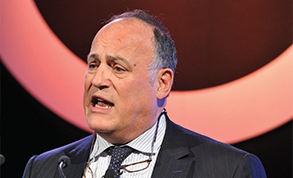GIRFT calls for capital investment in stroke services
The report, published in April, covers the whole stroke pathway – from prevention, pre-hospital and emergency management, to inpatient care and rehabilitation. Stroke is the biggest cause of disability and fourth largest cause of death in England. Some 100,000 people have strokes each year and there are 1.2 million stroke survivors.
GIRFT programme chair Tim Briggs (pictured) said the report came at a time when the NHS had undergone profound changes in response to the Covid pandemic. ‘Actions in the report, such as supporting the stroke workforce and staff wellbeing, and maintaining and evaluating the increased use of virtual working seen during the pandemic, can help the NHS as it faces the substantial challenge of recovering services, while remaining ready for any future surges, by operating more effectively and safely than ever before,’ he added.
The report is informed by visits to 122 acute stroke services over the last two years, which revealed numerous examples of best clinical practice. However, the visits also found stroke services facing significant pressures. These were caused by a variety of issues including inconsistent provision of a specialist workforce, inadequate resource and funding, sub-optimal access to diagnostic services and interventions, and limits on understanding capacity and demand.
Thrombectomy is highlighted as one of the areas where variation could be addressed. The procedure, which is undertaken in 23 specialist neurosciences centres across England, uses a catheter to remove a blood clot to restore blood flow to the brain. An estimated 10% of stroke patients are believed to be appropriate for treatment and the NHS long-term plan set this as a target before the pandemic. However, while the UK has improved the numbers being treated in recent years – to over 2% of patients by the middle of 2021 – the growth has been slow and there is wide variation.
Problems include a shortfall in interventional neuro-radiologists. A minimum of 156 are needed to staff 26 thrombectomy-capable comprehensive stroke centres 24/7 compared with the most recent headcount of just 85. New centres will also require ‘significant capital investment in estates, equipment and training’. The report also calls for effective pathway protocols to be established to enable effective transfers between referring acute stroke centres and the thrombectomy centres.
Currently only four catheter labs have access to more than one biplane CT angiography imager and meeting targets to increase access will require substantial investment in imaging capabilities at both ASC and CSC level, as well as new capacity at CSCs to undertake the procedure, the report said.
It also pointed out that while current tariffs cover the revenue costs of delivering thrombectomy, they do not adequately cover the considerable upfront costs of setting up the infrastructure. ‘Investment will need to be prioritised to cover these high fixed costs to enable change,’ the report stated.
More generally the report calls for integrated stroke delivery networks to develop detailed implementation plans for delivering the national optimal stroke imaging pathway (NOSIP). Among other goals, the pathway is targeting 24/7 access to imaging, which can distinguish between haemorrhagic and ischaemic strokes and provide useful information for treatment. Some 43% of patients are not being scanned within the target of one hour of admission – although rates are as high as 95% in the best performing hospitals. Investment is also needed in infrastructure and training to support sharing of images, alongside a coordinated rollout of artificial intelligence-enabled tools to support image interpretation and clinical decision-making.
Related content
The Institute’s annual costing conference provides the NHS with the latest developments and guidance in NHS costing.
The value masterclass shares examples of organisations and systems that have pursued a value-driven approach and the results they have achieved.